3D-Simulator Generates Training, Expertise on Subs
A new diesel generator simulator has been delivered to Pearl Harbor naval facilities by the TechSolutions program at the Office of Naval Research (ONR), officials at ONR announced March 18.
High-fidelity 3D software will allow Sailors to use 50-inch touch screens to see and access all parts of the massive generators aboard Virginia-class subs.
The Navy's Virginia-class submarines are among the most technically advanced vessels ever built. But even these cutting-edge, fast-attack, nuclear-powered boats need emergency generators on hand and Sailors trained to operate and repair them.
"This will be a big help for the fleet, getting Sailors more training time and providing potentially significant cost savings," said ONR Command Master Chief Jessie Thomas. "It has been challenging for all the Sailors who need training on these generators to get enough work time on the actual boats-particularly given that the subs can be out to sea for extended periods.
"A state of the art simulator allows far more time to learn how these complex machines work."
As Sailors are being trained on the simulator, they are able to touch different parts of the screen to view and access all parts of the complex generators, even moving virtual controls and twisting virtual knobs to make adjustments based on digital data or sight inspection.
The advanced 3D program-called the Multipurpose Reconfigurable Training System (MRTS)-will provide estimated cost avoidances of $27 million over building more generators for training, freeing up funds for significant expansion of training capabilities. The improvements include expansion of the Machinery Room where the simulators will be placed, allowing greater immersion and multiple-mission scenarios that until now had been largely confined to the classroom.
"The beauty of the system is that it should reduce the amount of lab time, while increasing the scenarios the instructor can put the students through," said Darrell Conley, project manager for Virginia diesel program at Naval Air Warfare Training Systems Division. "The software can be loaded on any MRTS 3D trainer in the fleet, allowing any boat to schedule required training."
The simulator is part of ONR's answer to Chief of Naval Operation Adm. Jonathan Greenert's Navigation Plan 2015-2019. The plan calls for greater focus on critical afloat and ashore readiness, including "development and fielding of live, virtual and constructive training environments to provide more realistic training at a reduced cost."
The TechSolutions program takes technology requests directly from Sailors and Marines. When the organization receives a request for a technology solution to a problem, anything from Sailors on watch needing improvements in steel toe boots, to Marines in theater requesting better mortar sights, the program attempts to find and deliver a rapid technology prototype solution, usually within 12-18 months from the request being received.
"The work being done by TechSolutions makes an enormous difference to our Sailors and Marines," said ONR Executive Director Dr. Walter Jones. "Innovative technologies, directly requested by our men and women in uniform, are able to reach the user in accelerated timeframes, making contributions from daily life to tactical functionality of platforms in the field."
The Sailors will work with the generator simulator at Pearl Harbor over the next several months, and it will ultimately be considered for transition to Naval Sea Systems Command's Undersea Warfare Directorate.
For Sailors and Marines interested in submitting a technology request: Visit TechSolutions.
ONR provides the science and technology necessary to maintain the Navy and Marine Corps' technological advantage. Through its affiliates, ONR is a leader in science and technology with engagement in 50 states, 70 countries, 1,035 institutions of higher learning and 914 industry partners. ONR employs approximately 1,400 people, comprising uniformed, civilian and contract personnel, with additional employees at the Naval Research Lab in Washington, D.C.

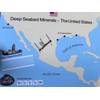
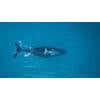
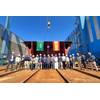
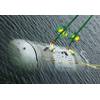

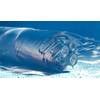








 February 2025
February 2025



